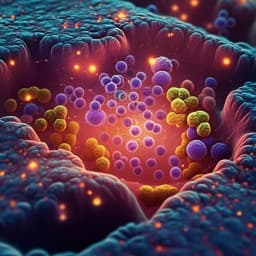
Chemistry
In situ analysis of the bulk and surface chemical compositions of organic aerosol particles
Y. Qian, J. B. Brown, et al.
Discover a groundbreaking method to directly identify chemical structures at aerosol particle surfaces using vibrational sum frequency scattering. This innovative research, conducted by Yuqin Qian and colleagues from Utah State University, reveals fascinating insights into molecular behaviors, challenging existing hypotheses and paving the way for a deeper understanding of aerosol chemistry and its implications for atmospheric science.
~3 min • Beginner • English
Related Publications
Explore these studies to deepen your understanding of the subject.







